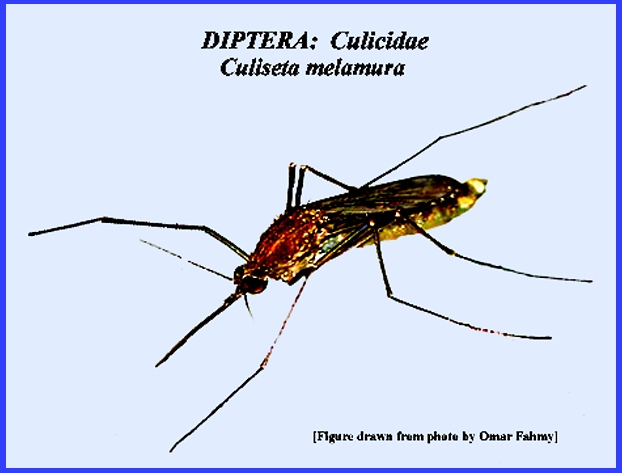File: <easternequineencephalitis.htm> <Medical Index> <General Index> Site Description Glossary <Navigate
to Home>
|
EASTERN EQUINE ENCEPHALITIS (Contact) Please
CLICK on
underlined links for details: Infection is
found in many different mammals, reptiles amphibians and birds. A bird-mosquito cycle sustains the virus
in nature where two mosquito species are primarily involved: Culiseta melanura and
Culiseta morsitans. The mosquitoes
draw blood from birds and the virus increases throughout the summer as more
mosquitoes and birds become infected. Other
mosquito species that feed both upon birds and mammals are involved in the
transmission to humans. In the
eastern United States the virus is found mostly in urban areas where
according to Service (2008) it is vectored by Culex
quinquefasciatus and Culex pipiens. However, later studies have focused
attention rather on Aedes vexans, Coquillettidia
perturbans, Ochlerotatus canadensis
and Ochlerotatus sollicitans. Domestic chickens
and wild birds are the amplifying hosts.
In the western United Sates it is found mostly in rural areas
associated with the rice field-breeding mosquito Culex tarsalis. The virus
titre in in the blood of horses, humans and other mammals is never high
enough to infect additional mosquitoes.
However, the virus has been contracted from exposure of different
parts of the body to parts of dead infected animals. = = = = = = = = = = = = = = = = = =
= = Key References: <medvet.ref.htm> <Hexapoda> Matheson, R. 1950.
Medical Entomology. Comstock
Publ. Co, Inc. 610 p. Service, M. 2008. Medical Entomology For Students. Cambridge Univ. Press. 289 p Legner, E.
F.
1995. Biological
control of Diptera of medical and veterinary importance. J. Vector Ecology 20(1): 59_120. Legner,
E. F. 2000. Biological control of aquatic
Diptera. p. 847_870. Contributions to a Manual of Palaearctic
Diptera, Vol. 1, Science Herald, Budapest. 978 p. |
